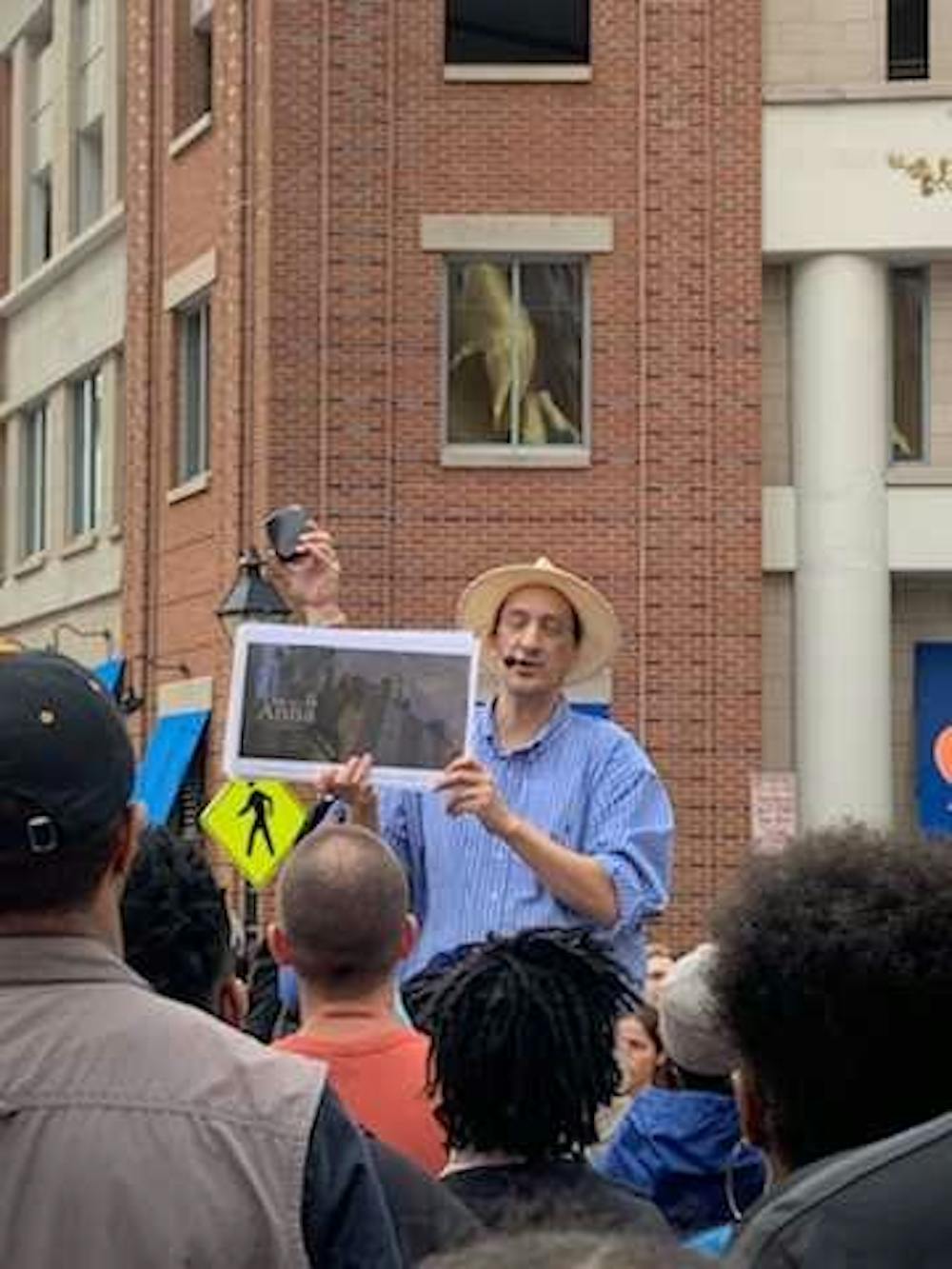Baltimore History and Culture and Underground Railroad Tours co-hosted a walking tour titled, “Slavery, The Underground Railroad and Emancipation in Baltimore,” on Saturday, March 30 at the Frederick Douglass-Isaac Myers Maritime Park.
Baltimore History and Culture is a nonprofit community organization seeking to bring the people of Baltimore together to experience the city’s history.
Baltimore resident, Nabeehah Azeez was excited to attend the tour. She emphasized the importance of learning history and appreciated that the tour was free.
“There’s so much African American history not just in Baltimore but across the country. There’s always something more to discover. We should be lifetime learners. I’m glad opportunities like this are available for free, so there’s no barrier for people who want to gain a little knowledge,” Azeez said.
The tour began at the Frederick Douglass-Isaac Myers Maritime Park and ended at the USS Constellation. It was approximately two hours long and covered almost two miles of Baltimore. According to organizers, over 200 people joined the walking tour.
Robert Kelleman, the founder of Baltimore History and Culture, led the tour. Kelleman works in the Student Analytics and Insights department of Strayer University. By offering free tours, Kelleman wanted to educate people on the various historic spots in Baltimore and create a lasting impression.
“Another reason to do this tour is to just familiarize people with sites they should come visit and explore later on,” he said.
The tour included a range of subjects from Frederick Douglass, Harriet Tubman, Kunta Kinte, Rachel and Elizabeth Parker, the Edmonson sisters, Henry “Box” Brown, Ellen and William Craft, and the Christiana Riot.
Kelleman talked about the difficulties people faced when attempting to escape slavery. According to Kelleman, geographic mobility was heavily restricted for women and people of color in the 19th century. He used the restrictions on train travel as an example.
“This train station, along with several others in the area, you could not travel on it by yourself if you were African American unless someone had vouched for you. Here’s the actual advertisement, ‘Philadelphia and Wilmington railroads — Notice the colored people.’ You have to a responsible white person to vouch for you,” he said.
Escaping slavery was incredibly difficult and usually not attempted, Kelleman explained.
“If you read the stories of people who were enslaved, usually there was a trigger that caused them to run away then, rather than a year before or five years earlier. There may be a handful of reasons why they escaped, why they fled at that exact point in time,” he said.
Ursula Johnson is a resident of Baltimore who joined the tour. She appreciated the material covered.
“It was very eye-opening, enlightening and inspiring. So much of what we learn in school is not accurate and being here on this tour shows what we as Americans, not just African Americans, need to learn about the history of this country. It’s our history,” she said.
One of the stops of the tour was the Reginald F. Lewis Museum. Although the transatlantic slave trade was banned in 1808, the slave trade within the U.S. persisted well into the 1860s, Kelleman explained. He further noted that this trade existed throughout the south and in Baltimore.
“Baltimore-based dealers supplied the trade, operating slave pens at the Inner Harbor, on Fell’s Point and across the city, including near this location. Between 1808 and the abolition of slavery in Maryland in 1864, an estimated 30,000 people were ‘sold south’ from Baltimore,” he said.
Ponsella Henry, community member of Baltimore, participated in the tour. She was pleased with the experience.
“There was a lot of history that I was not aware of so just hearing about our culture, our history, where we come from just gives me chills. My favorite stop was our second stop. [Kelleman] really started to get into the history and learning about how all the slaves overcome adversity was really interesting,” she said.





